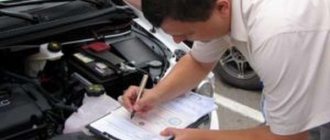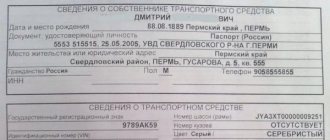Where do most Russian residents buy new cars today? At car dealerships. It is through them that most of the country’s car turnover passes. Many buyers believe that this is the most reliable way to acquire a personal vehicle. In their opinion, with such a purchase, the consumer is especially protected. These assumptions are not unfounded. But only the consumer who knows his rights well and uses the law to his advantage can consider himself truly protected.
Tips for communicating with your dealer
When you come to the dealership to buy a car, you need to properly communicate with the car dealer.
The buyer has the right to expect to receive a discount under certain conditions. In addition, it is worth considering that the seller’s task is to sell the most expensive version of the car as possible.
Once at the car dealership, you need to check the following information:
- Are there any documents proving the legality of the car you like;
- what technical characteristics does this car have?
- on what terms the transaction is concluded, including such nuances as the currency of payment;
- under what conditions is a discount on cars granted?
- Carry out a thorough independent inspection of the selected vehicle;
- based on the inspection results - bargain.
The last point is very important because many buyers think that the price quoted by the employee is final. But this is not true, and there are always ways to reduce it through trading. Usually, the price quoted by the salon already includes this possibility.
Pitfalls of buying a car from dealers in the showroom
A car dealer is a true professional in his field. He knows exactly how to present a car to you so that you buy it. If mileage twist occurs, it is performed professionally, so it can only be determined by a detailed study of secondary factors. If rust is hidden, even a specialist will not be able to find it right away. The main problems of buying a car from dealers may be the following:
- purchasing a drowned item that has been in water and will now constantly rust and remind you of troubles every month, requiring some care;
- veiled poor-quality restoration after an accident is also a popular purchase in the dealer showroom; managers know how to beautifully play up the car’s shortcomings;
- a car with an already expired life can be actively sold at a dealer and bring good money to the former owner and good profit to the auto business;
- when choosing a car in a showroom, a person is less attentive than when buying it in person, so you can always relax and buy a car that is not of very high quality;
- There are factors of lack of warranty, a complex and legally binding contract with the seller, all of which slightly reduces the attractiveness of purchasing a car from a dealership.
Having a used car at a dealer's showroom is both a danger and a privilege. Of course, there are many important advantages to such a purchase. It is worth recognizing that dealer sales of used cars are more convenient, comfortable and enjoyable for the buyer. But there are problems with mindfulness that can be very difficult to solve. Therefore, it makes sense to invite an expert with you when buying a car who will understand all the problems.
What do they check when buying a car at a dealership?
The future car owner should be as careful as possible when purchasing a car from a car dealership. In order not to encounter various troubles later, it is better to subject the car to a series of checks. Moreover, domestic legislation provides for such a right for the buyer.
First of all, pay attention to a number of technical characteristics.
- Body condition. This is where a visual inspection of the car begins, since most defects are discovered by carefully looking at the body. Scratches and chips will cause corrosion to spread. It is worth paying attention to the presence of stickers that are used to hide defects. And new paint, which indicates that the car has been in an accident. The body inspection must be carried out in daylight.
- Places where parts are connected. When looking under the hood and into the interior, the buyer should pay special attention to how well the parts are connected. Quality will be evidenced, for example, by how smoothly and silently the car doors close.
- Engine noise. This parameter is the easiest way to determine how well the car's engine feels. In the absence of malfunctions, its noise should be smooth and monotonous, without any knocking or other extraneous sounds. The latter do not necessarily indicate something truly serious, but they are undoubtedly a reason to reduce the price.
- Air conditioner. Its operation must be checked if it is included in the package. Air conditioner repair is never cheap. Therefore, you should not skip this stage and then find yourself in a situation where you will need to spend a lot of money. If the dealership's salespeople claim that it is not working because it needs refueling, then the buyer should still insist on diagnostics or a discount.
- Presence of leaks. This indicates leakage of the nodes. The reason is that someone has already gotten inside the engine. Leakage itself indicates the danger of lubricant leakage with all the consequences.
- The color of the smoke from the exhaust pipe. Not everyone knows, but the color of the smoke is one of the main indicators of good engine performance, along with noise. On a working car it is always quite light. Darkening indicates that the oil supply is excessive and at a minimum, replacement of the injectors is required.
- Automatic transmission condition. The easiest way to check how well the transmission is feeling is to check the condition of the oil. In a working car, oil, if dropped onto a white cloth or napkin, will not have any foreign odors and will be quite clean. At the same time, if the oil is too pure and quickly absorbed, then it is likely to be replaced immediately before sale to hide automatic transmission problems. If, on the contrary, the oil is dark or cloudy, this means that the car cannot be operated without major repairs.
- The progress of the car. Be sure to drive the car around the test site, gradually increasing the speed. A good car does not drive on the road at any speed, and its engine and wheels do not make unnecessary sounds.
- Condition of suspension and brakes. This is the final and one of the most important stages of evaluating a car before purchasing it. There are several ways to check the brakes, for example, driving over bumps. But the only acceptable way for a car dealership is to visit a car service center, where they will check the suspension and braking system.
Each of these parameters is not only important because it speaks about the condition of the car, but any deviations can significantly affect the price. And, having discovered them, the buyer can qualify for a fairly decent discount, which can be several times higher than the cost of fixing the problem.
Other Features
But checking the technical specifications is not the only thing you should pay attention to when buying a vehicle at a car dealership. You need to pay attention to the details.
- Eliminate the imposition of a more expensive configuration option if the buyer does not need it. Employees of car dealerships are often guilty of this.
- Check that the year of manufacture matches the declared one. If you need a completely new car, then take into account that at the beginning of the year, showrooms sell the previous car.
- Availability of a VIN number if the car is used.
- Monitor the exchange rate of foreign currency, which is the base currency when calculating the cost of a vehicle. It should not differ too much from what is officially established.
- Delivery times for cars purchased to order must be reasonable. They should not be delayed.
- The contract must specify the amount of the penalty for failure to provide the car, despite the advance payment made for it.
- The equipment specified in the contract must match the one actually delivered to the buyer.
- A car dealership should not impose additional expensive services and products, such as all kinds of mats and brushes.
Taking these points into account can significantly save money in the consumer’s wallet.
First things first - documents!
Experts recommend starting with checking your documents. It's surprising how many people do not check the exact correspondence of the information specified in the vehicle title with the vehicle data. This is the name, surname and patronymic of the owner, the exact name of the model, engine number, body color, engine power, year of manufacture and VIN identification number. After all, due to an error even in one letter, the car may not be registered with the traffic police!
Registration of a car purchased at a dealership
The Code of Administrative Offences, in Article 19, indicates that a person who has purchased a car must register it with the traffic police MREO within ten days. Otherwise, the car owner will face a fairly significant fine of up to 2 thousand rubles or even deprivation of rights if the violation was repeated.
State registration can be completed in any locality in the country. To do this, there is no need to go to your place of registration. The traffic police will independently submit all the necessary information to the inspection and tax departments in the region of residence of the car owner.
In general terms, the procedure for registering a new car looks simple.
- First of all, make an appointment at the MREO traffic police department in the region where the car owner plans to register his vehicle. They do this both through the government services portal and by telephone. If the date of the transaction is already known, it is better to sign up in the queue before purchasing the car.
- The second stage involves submitting an application. Its form is also downloaded on the State Services portal. Moreover, it can be filled out and submitted electronically, which eliminates the need to stand in queues.
- If a compulsory motor liability insurance agreement was not concluded at the time of purchasing the car, this must be done before going through the registration procedure.
- Pay the state fee. Details and amount are indicated on the inspection website.
- At the appointed time, they bring the car for inspection, taking with them the entire package of documents.
- Within an hour, the inspector must carry out an inspection, checking that the car is equipped with everything that is provided for by the traffic rules. The technical condition of the main components is also checked.
- After a positive decision is made, the motorist is issued a license plate.
The list of documents required for state registration is quite small and includes:
- civil passport of the vehicle owner;
- technical passport (PTS) of the new car;
- the registration application itself, if it was not submitted online;
- a receipt indicating that the state fee has already been paid.
Before submitting, check in advance that all documents are present.
Which car dealership should a motorist without experience go to make a purchase and why?
Often, official dealers force the purchase of additional equipment, and the prices themselves seem inflated to motorists. And then the novice driver goes to an unofficial car dealership. However, even an experienced car owner in such cases often falls on the hook of unscrupulous sellers.
Here are a few schemes used by scammers:
- Over the phone they quote a price lower than the cost of the car. The buyer arrives and, feeling inconvenienced by the seller who is wasting his time, agrees to pay more than he expected;
- If you are told that the necessary equipment was sold out literally before your arrival, and are offered to buy a more expensive one, know that you are being scammed;
- The seller says that he brought the car especially for you from the warehouse. Refusal to purchase may result in a penalty fee;
- Customers offer a completely different car;
- Introducing unfavorable conditions for the buyer into the loan agreement: hidden payments, increasing the amount, additional insurance, etc.;
- Sale of used cars;
- Cars with a dirty legal history.
Of course, not all unofficial and multi-brand salons operate according to black schemes. Many have a good reputation earned over the years. However, if you notice signs of one of the listed patterns, leave and do not linger.











